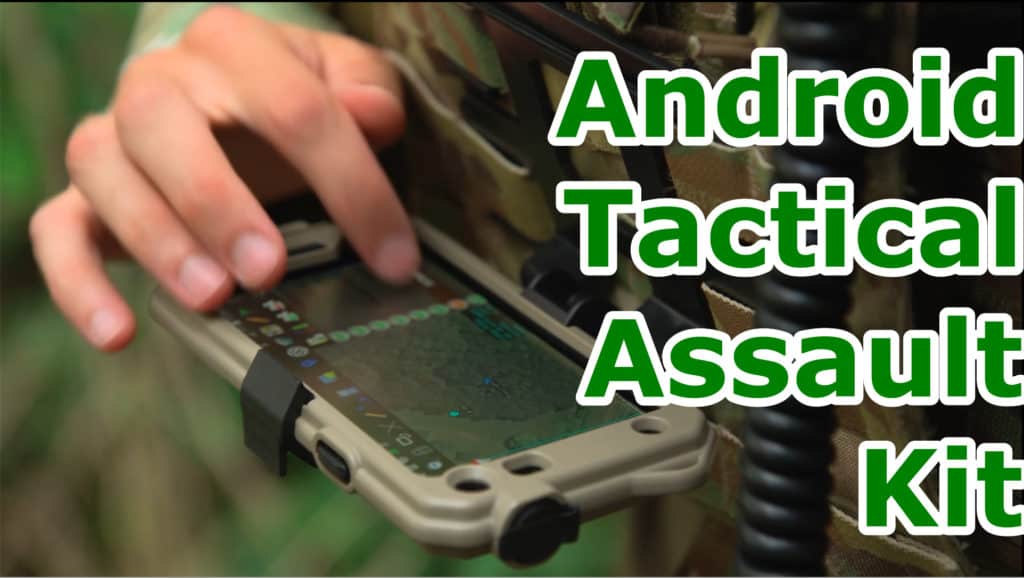ATAK is the Android Tactical Assault Kit.
It is a smartphone geospatial application originally developed for Android phones and tablets.
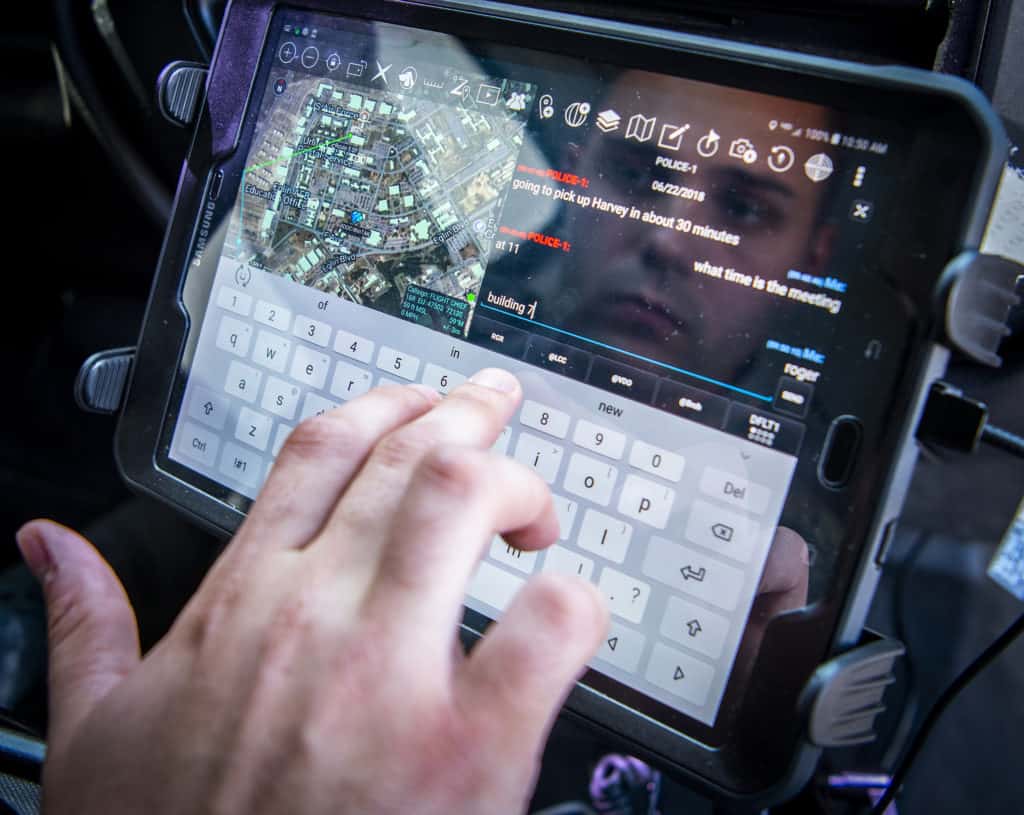
It is sometimes referred to as the Android Team Awareness Kit or the Awesome Team Awareness Kit – because there are versions for Windows and iOS as well as Android.
Tactical uses include mission planning, situational awareness (SA), mission execution, and call for fires solutions.
ATAK has been used by US forces in Iraq, Afghanistan, and Syria.
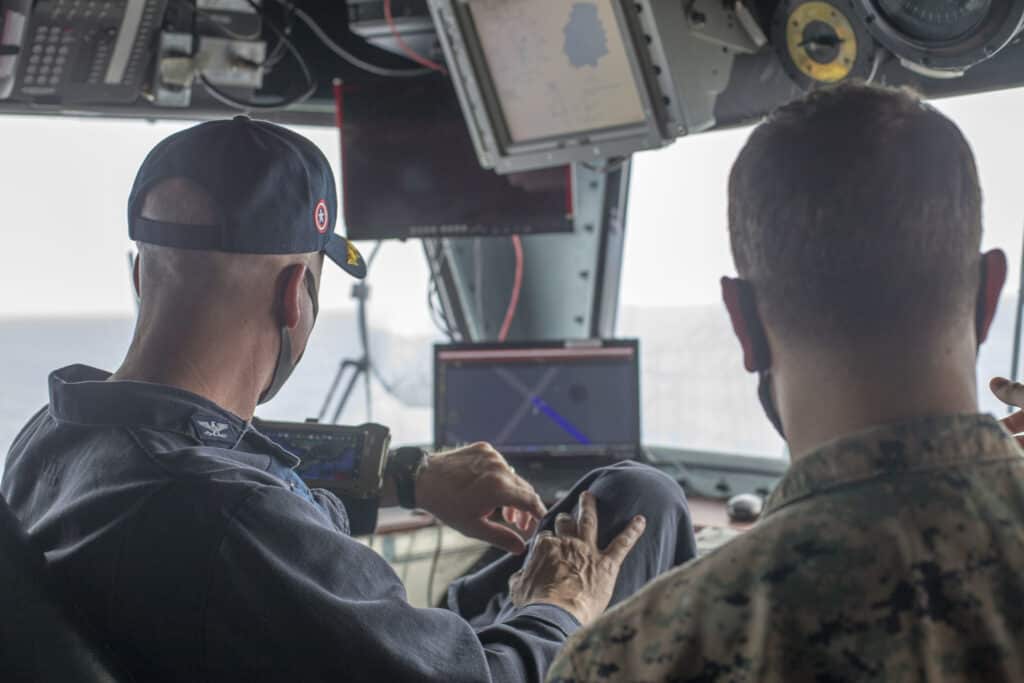
Here’s a video that describes the uses of ATAK, and shows some of the tactical and non-tactical uses:
What can ATAK do?
ATAK is meant to be used with networks (cellular, Wifi, or mesh network tactical radios.)
It enables sharing or presentation of voice, text chat, video, pictures, and an interactive, layered, shared, moving map, plus many other niche data types for the tactical user. The application’s human interface intent is to provide warfighters with an understanding of what is going on around them. This is also known as Situation Awareness (SA.)
ATAK can utilize all the sensors built in to your smartphone including: altimeter, barometer, compass – and of course GPS as well.
Basic functions available in both the civilian and military version include:
- Online and offline mapping (supporting most standard formats) with a fast rendering engine
- Web Browser – with support for JavaScript
- Collaborative mapping, including points, drawings, locations of interest, KML, maps
- Location marking, sharing, history
- Chat, file sharing, photo sharing, video sharing, streaming
- Navigation (walking/hiking, driving, also useful for limited flying)
- Altitude profiling between locations, routes with DTED and Shuttle Radar Topography Mission (SRTM)
- Cell phone, Wi-Fi, civilian radio controls, interface
- Skydiving tool (w/winds for better prediction)
- Hunting, Fishing, Ornithology, Wildlife Site Survey
Unique military capabilities (for military customers only) include:
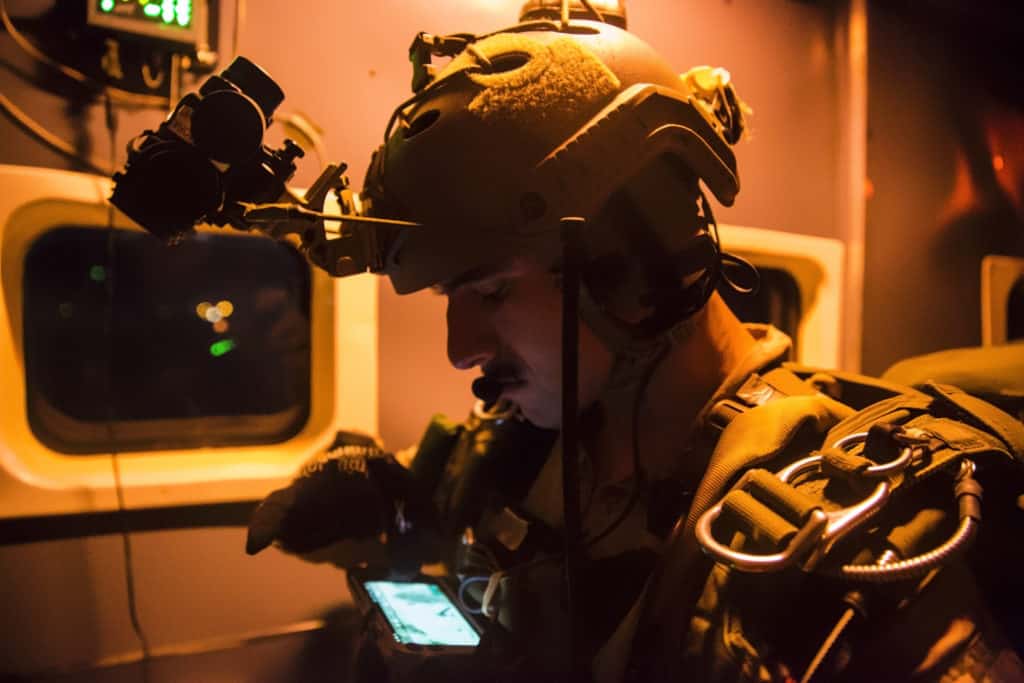
One of the most important features of ATAK is providing a friendly force tracker.
Team leaders can quickly determine where their team members are by viewing their locations on ATAK enabled devices.
Perhaps more importantly, they can also re-direct those team members to new objectives easily.
Note that ATAK doesn’t do instant voice communications quite as well as a boom mic, radio and PTT switch- so in most situations you still need some sort of tactical radio comms setup.
After all, you can’t be futzing around with a delicate smartphone while bullets are flying.
But, that’s OK – because ATAK offers so much more.
Who can use ATAK?
ATAK was originally developed by the US Air Force Research Laboratory (AFRL) in an “open source” fashion.
The technology can be licensed by companies that wish to expand the capabilities of the software – for military or civilian purposes.
This video addresses the process by which ATAK was created – and the licensing:
One use of ATAK: The MAGTF Common Handheld (MCH)
The U.S. Marine Corps is also fielding a Marine Air Ground Task Force (MAGTF) Common Handheld device (or MCH) that is available in a smartphone and tablet form factor.
This device appears to be used with some version of ATAK.

The smartphone device can be wrist mounted, or on a plate carrier.
What is CivTAK?
Previously, there was a civilian version of the ATAK app called CivTak or Civ-Tak that was freely available.
It appears that is no longer the case, as the previous download links do not work.
Distribution may be limited to US government employees and companies who have been accepted for licensing via the Techlink portal.
Mesh Net Radios
ATAK uses inexpensive off-the-shelf mobile computing devices like smartphones and tablets. (But these are usually protected in ruggedized, milspec phone cases.)
These devices use short range networking (WiFi, Bluetooth) and public cellular communication networks that may not be available in the area of operations (such as in the wilderness.)
Through the use of special hardware, these devices can also use mesh network radios and other tactical radios.
This offers an “off-grid” communications capability that is both secure and high performance.
The Nett Warrior program of the U.S. Army is developing a capability using Rifleman radios and consumer class smartphones (running the ATAK software.)
But, mesh network devices are available on the commercial market as well. One such device is the goTenna Pro X.
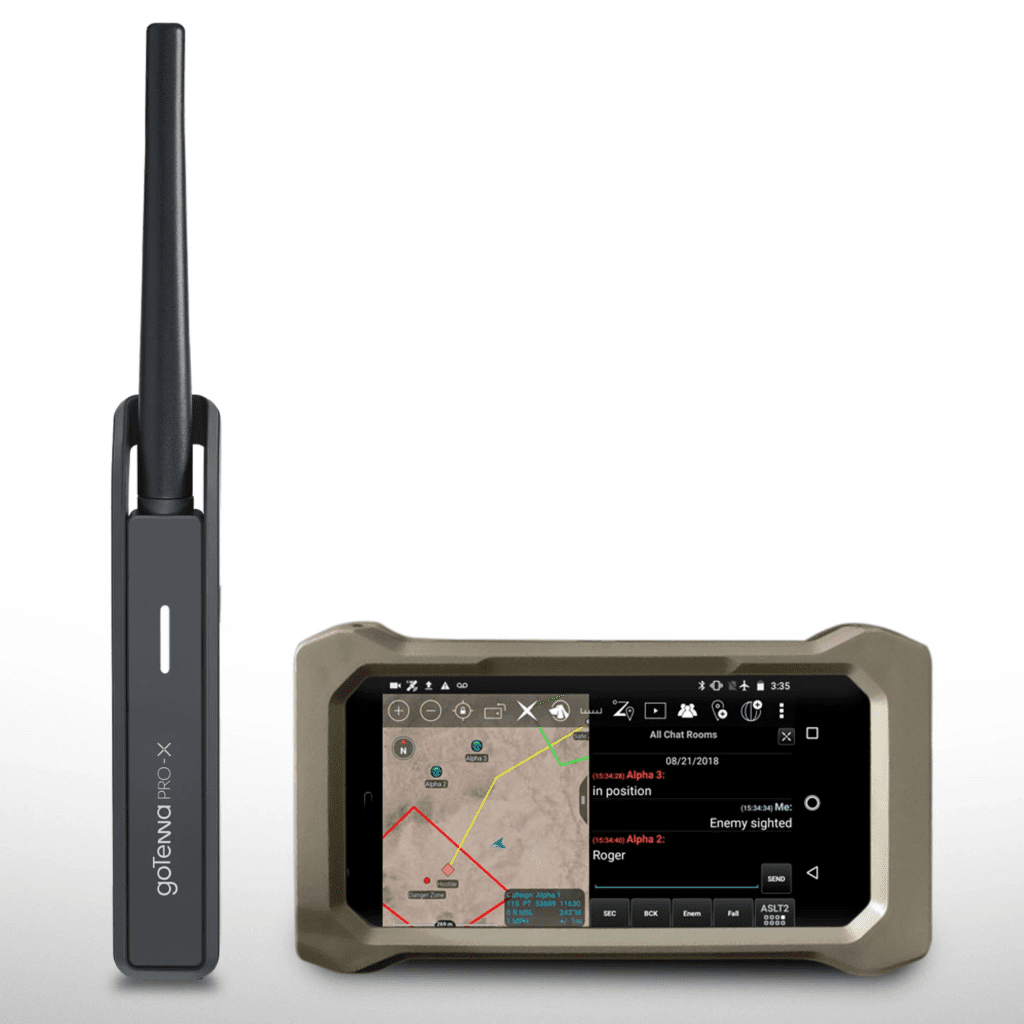
The Pro X is a digital tactical radio (5W VHF/UHF output) that is very small and made to work with smartphones.
It is meant for “off-grid” solutions – meaning it does not rely on existing radio towers, repeaters, or base stations.
It has mesh networking features which means the radios can communicate amongst each other.
In effect, each device is a “relay”. This is what gives it the ability to provide a radio network in any location.
Typical radio range is 4 miles point-to-point range.
Communications are encrypted using AES 256 PKI.
Battery life is up to 30 hours, and the device weighs less than 3 ounces.
And that’s one of the amazing things about ATAK – consumer electronics have become very, very small – why lug around a dedicated handheld GPS that does a fraction of what ATAK can do on your phone?
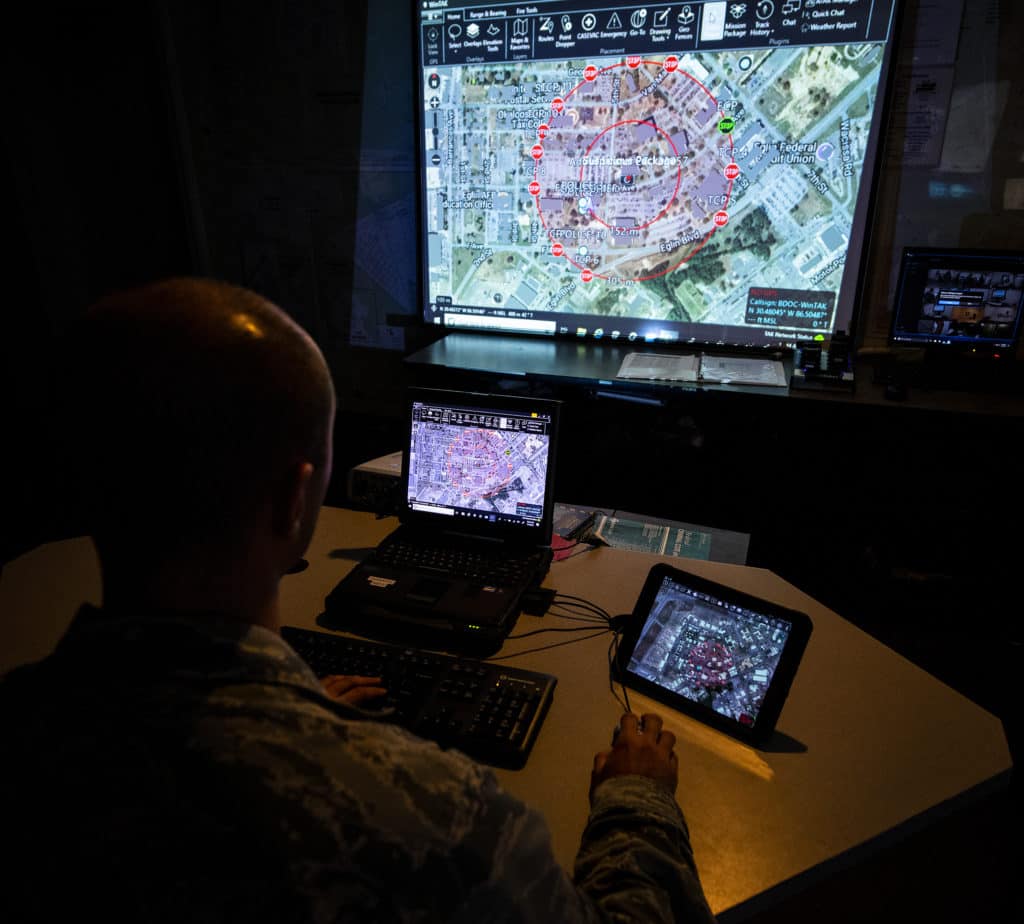
ATAK – In Summary
ATAK is a “tactical” smartphone application.
It enables robust real-time sharing of geospatial information and communications.
It is an excellent tool for attaining Situational Awareness (SA) in a variety of situations.
Pair it with mesh tactical radios for a team solution that works anywhere.
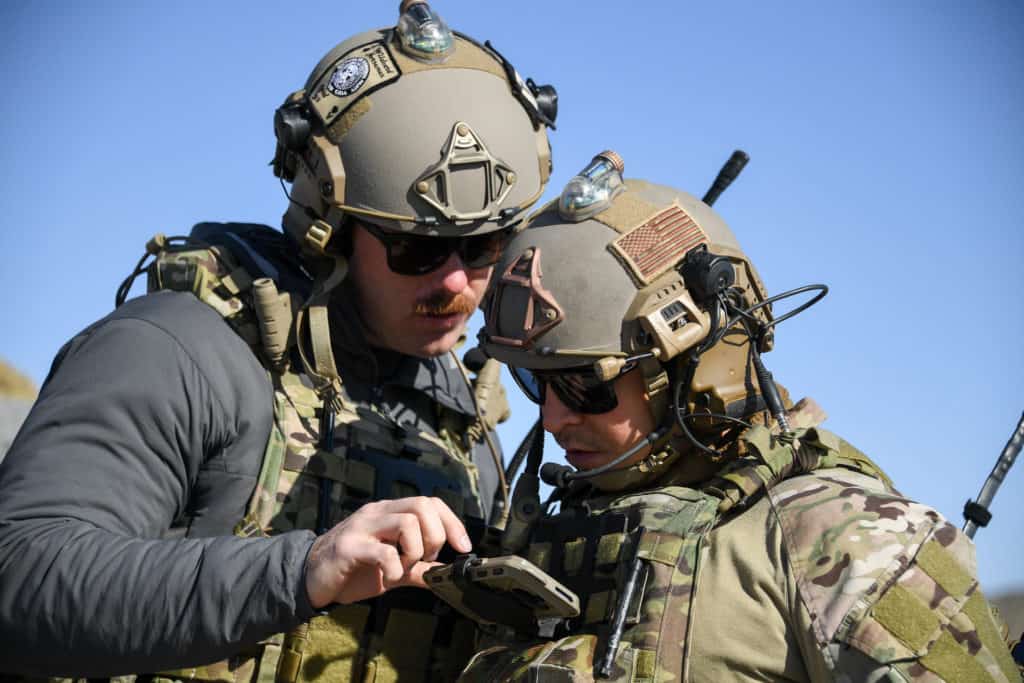
References
Android Tactical Assault Kit (Wikipedia)
Nett Warrior Map Engine Trade Study Report
goTenna Pro X tactical radio product specs
Handheld tablet improves situational awareness
The appearance of U.S. Department of Defense (DoD) visual information does not imply or constitute DoD endorsement.
